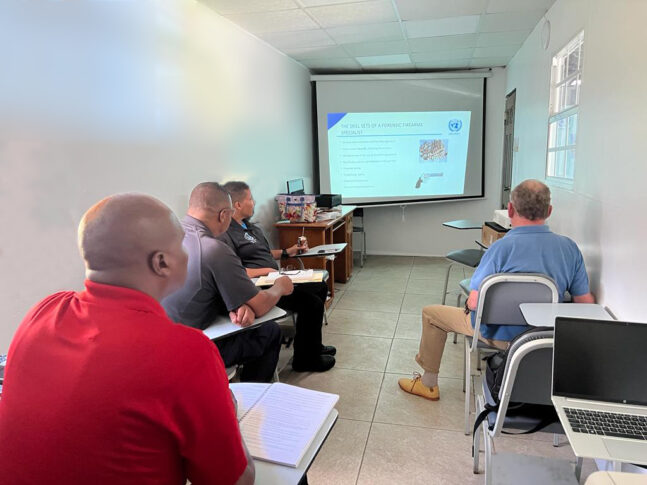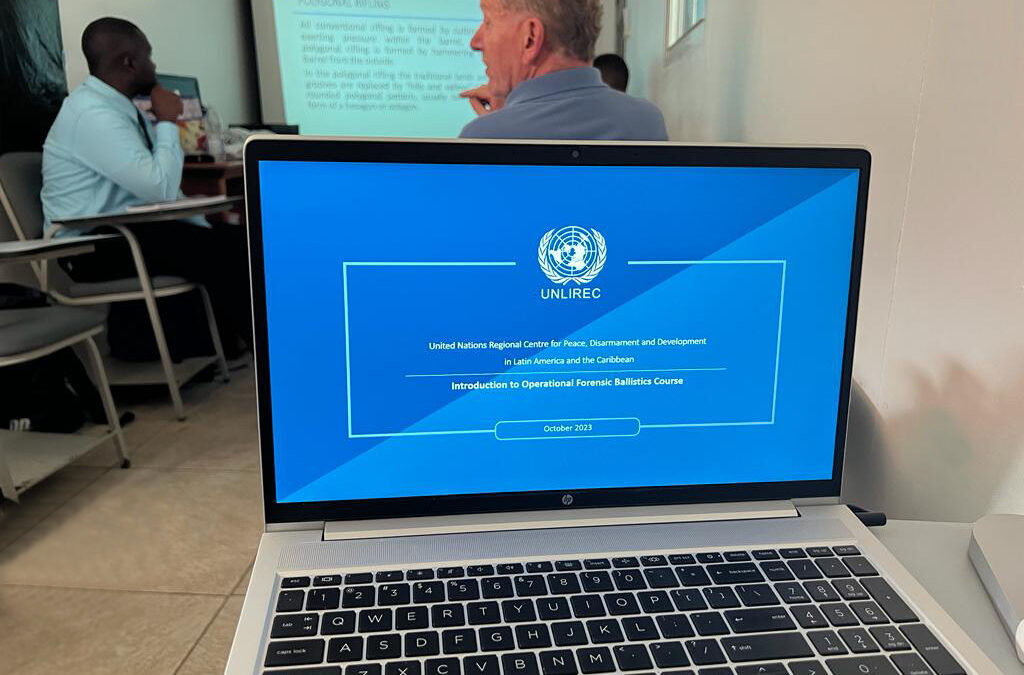From 16—21 October, the United Nations Regional Centre for Peace, Disarmament and Development in Latin America and the Caribbean (UNLIREC) delivered the Introduction to Operational Forensic Ballistics Training and conducted assessments on Forensic Ballistic capabilities and Inventory Management at the Royal St. Kitts and Nevis Police Force. These activities are in line with the Caribbean Firearms Roadmap (CFRM), particularly to the priorities identified by the State in its National Action Plan, aimed at bolstering law enforcement capacity to combat illicit firearms and ammunition trafficking and their illicit possession and misuse, and decreasing the risk of diversion of firearms and ammunition from government- and non-government-owned arsenals.
As part of the assistance, UNLIREC facilitated an introductory training in Operational Forensic Ballistics to four officials from the Royal St. Kitts and Nevis Police Force and St Kitts and Nevis Defence Forceaimed at educating forensic officials and other staff to the requirement for, and capabilities of, forensic ballistics in support of criminal investigations and the counter-proliferation of firearms.
Additionally, the assessment on forensic ballistics capabilities and evidence management were carried out with the aim of gauging the capabilities at the forensic laboratory, as well as the security measures and inventory management practices at the Police facilities. The assessments were conducted in line with international guidelines, including the United Nations Modular Small-arms-control Implementation Compendium (MOSAIC) and the International Ammunition Technical Guidelines (IATG) and Standard Operating Procedures (SOPs).
UNLIREC, as the UN Office for Disarmament Affairs’ Regional Centre, seeks to advance the cause of practical disarmament in Latin America and the Caribbean as part of its commitment to support Member States in their implementation of international disarmament and non-proliferation instruments, in particular, the 2001 UN Programme of Action on Small Arms. This assistance was made possible with the generous support of the governments of the United States of America and Canada.


